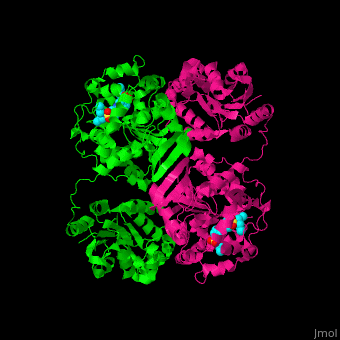Function
Epoxide hydrolase (EH) converts epoxides to trans-dihydrodiols which are excreted from the body. Thus, EH acts as a detoxification agent. Epoxides are formed from degradation of aromatic compounds[1].
Bifunctional EH 2 or soluble EH (SEH) is a bifunctional enzyme with the C-terminal domain having EH activity and the N-terminal domain having lipid phosphatase activity.
Limonene-1,2-epoxide hydrolase catalyzes the conversion of limonene-1,2-epoxide to limonene-1,2-diol[2] . For details see limonene-1,2-epoxide hydrolase.
Disease
Inhibitors of Mycobacterium tuberculosis EH such as urea derivatives, are used as anti-tuberculosis drugs. The valpromide inhibitor of EH is used as anti-epileptic drug. Soluble EH plays a role in several diseases including cardiovascular ones and is a drug target for their therapy [3].
Relevance
Structural highlights
.
(PDB code 5alf).[4]
3D Structures of epoxide hydrolase
Epoxide hydrolase 3D structures

